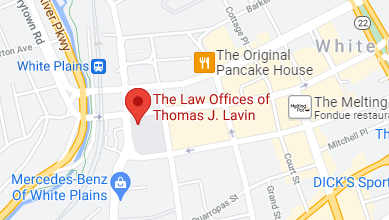Medical malpractice is a complicated area of personal injury law, and it can be difficult to come to the realization that a medical professional someone has trusted with their health and well-being may have been negligent in such a way that the patient suffered harm, potentially long-term or permanent. While there are myriad forms medical malpractice can take, there are some unfortunately all-too-frequent situations that show up as malpractice. Read on to learn more.
What Is Medical Malpractice?
Medical malpractice happens when a patient is injured or harmed because a healthcare professional or hospital was negligent or guilty of an act of omission. This can happen at any point during someone’s medical treatment, from the initial diagnosis to hospital discharge and aftercare.
To prove medical malpractice in court, the following must be established.
- Duty of care. The medical professional or organization has a duty to follow the strictest standards of care for every aspect of the patient’s diagnosis and treatment.
- The duty of care was breached. Whether through negligence or an act of omission, the medical professional or organization did not adhere to the duty of care.
- Causation. Because the duty of care wasn’t followed, harm or injury was caused to the patient. This can be the most challenging part to prove, both because it involves proving the medical professional or organization didn’t adhere to the duty of care and because that breach of duty directly caused harm. If causation can’t be proven, the case will not succeed.
- The injury caused damage to the patient. These can be financial, such as extensive out-of-pocket medical expenses or loss of wages due to the inability to work, or it can be things like the patient becoming disabled or experiencing pain and suffering due to the injury.
To pursue a medical malpractice claim, the patient must show that the injury resulted in disability, loss of income, unusual pain, suffering and hardship, or significant past and future medical bills.
What Are the 5 Most Common Causes of Medical Malpractice in New York?
As noted above, nearly countless variations exist on what constitutes medical malpractice. Here are the five most common causes.
- Errors in diagnosis. This can include either misdiagnosing a condition or illness or failing to diagnose a problem altogether. An example would be a patient who is told they’re having a panic attack when in fact, they’re having a heart attack. Because it was misdiagnosed, the heart attack could lead to long-term complications or even death when it might have been treated successfully if diagnosed in the first place. Keep in mind that this also happens in dental offices when dentists misdiagnose dental problems or don’t properly test and diagnose existing conditions that can worsen and cause pain and extensive (and expensive) subsequent treatments.
- Errors during surgery. This is a vast category that encompasses everything from performing the wrong type of surgery or on the wrong body part, surgical instruments left inside bodies, or incorrect use of monitors and machinery.
- Errors in drug prescriptions. This category has several variations, including prescribing the wrong medication or medication to which the patient has indicated they’re allergic, not prescribing a medication at all, or ordering an incorrect dosage, all of which can harm the patient.
- Conditions not treated. This includes situations where a medical professional neglected to take the correct steps to diagnose or treat a condition. For example, a doctor may not request tests that would have indicated a problem needing immediate treatment, and because they didn’t test, the patient suffered an injury.
- Injuries during childbirth. These may involve either the mother or the child, or both. It can involve anything from nerve damage to broken bones or even brain injuries.
What Is Wrongful Death?
Wrongful death happens when a victim dies due to the wrongful conduct, including negligence, of another. This appears in various areas of personal injury cases, including medical malpractice.
Similarly to proving medical malpractice, wrongful death must prove:
- The duty of care was breached by the medical professional or organization.
- Because of that breach of duty of care, the victim died when they likely wouldn’t have otherwise.
- The victim had survivors in the form of a spouse, children, or other dependents or beneficiaries.
- The survivors were caused financial damages by the victim’s death, such as a family that no longer has an income provider.
What Should I Do if I Suspect Medical Malpractice Happened in My Medical Case?
Call the Law Offices of Thomas Lavin at 718-829-7400 for a free case evaluation. Medical malpractice is not something someone should try to mitigate on their own. It’s a complicated area that benefits from working with our team of experienced, knowledgeable medical malpractice attorneys. You can be sure the medical professional or organization accused of medical malpractice will fight the charges as hard as they can, so having an attorney devoted to your side is a must.
Something it’s imperative you do not do: Respond to any communications with the other parties in the case, their insurance representative, or their attorneys. Because their goal is to remove all or most liability from their client, they could try to find ways to make you say things indicating you don’t hold their client responsible. They could also try to get you to accept a much lower settlement than you could earn if the case goes to trial. Whether they contact you by phone, email, or letter, don’t respond; just send the communications to your lawyer.








